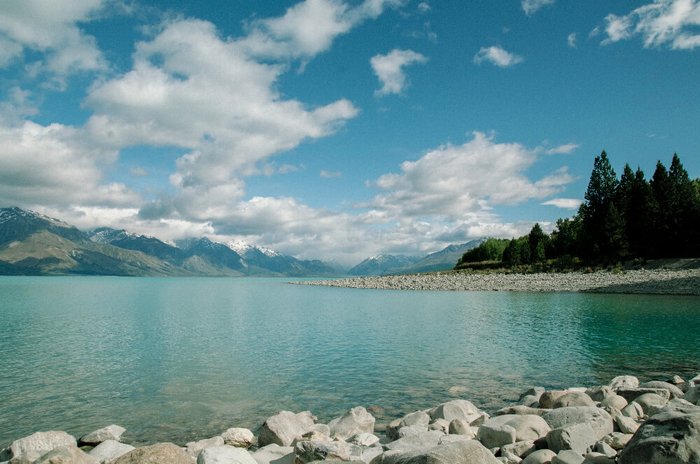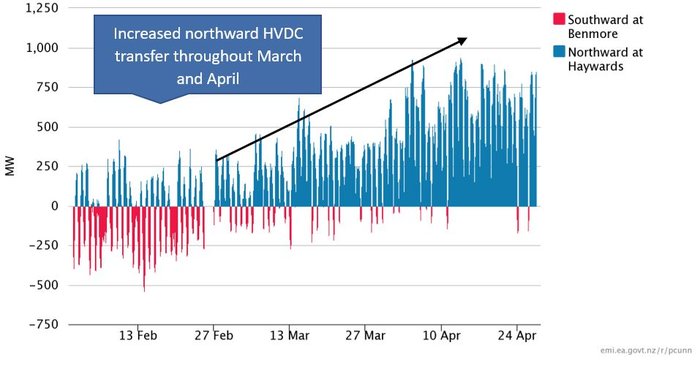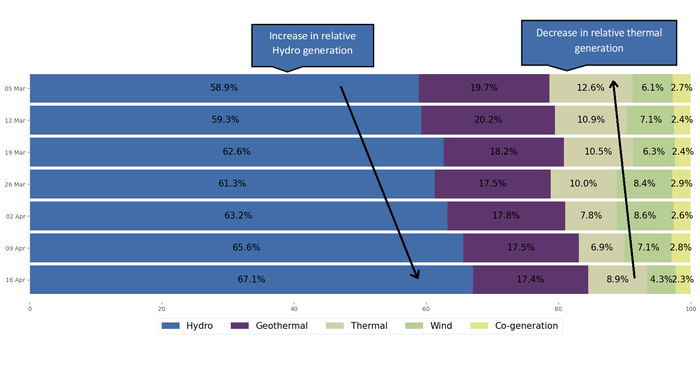Eye on electricity
Southern lakes, the HVDC and thermal powered generation
- Generation
- Transmission

Electricity demand and generation differ across New Zealand’s two main islands. The South Island has abundant hydro generation, while the North Island contains more people and consumes more electricity. HVDC cables allow electricity from one island to flow to the other.
Typically, electricity flows northward during the day, and southward overnight. However, when South Island hydro inflows are high, the HVDC can continuously flow northward.
In March 2023, the atmospheric La Niña conditions, which encourage more easterly winds, have relaxed into El Niño-Southern Oscillation neutral. In recent weeks, over the southern hydro lakes, more westerly winds have brought rain and increased hydro storage.
Between 9 and 29 March 2023, South Island hydro storage increased by 489 GWh. New Zealand’s largest storage lake, the Pūkaki was nearly full in early April. Pūkaki is a teal-coloured lake which feeds multiple Waitaki hydro stations.
With Pūkaki full, large amounts of South Island generated hydroelectricity was transferred north in March and April 2023 (Figure 1). This resulted in reduced thermal generation (Figure 2). Thermal generation contributed only 8.9 per cent to total electricity generation between 16-22 April 2023, as compared to 12.6 percent in early March 2023. This is also markedly different to the previous year, when thermal generation contributed closer to 19 per cent of total generation in April 2022.

Occasionally in April 2023, the electricity spot price was higher in the North Island and lower in the South Island. This market phenomena is due to the North Island needing enough reserves (or stand-by generation), should the HVDC unexpectedly fail. When the HVDC transfers high electricity volumes, this ‘just in case’ generation becomes a significant proportion of available North Island capacity. Hence, the cost incurred to meet the remaining North Island demand is effectively raised by the cost of electricity reserves. This caused the higher North Island prices and the inter-island price separation in April 2023. Despite these instances of price separation, this HVDC transfers are still the cheapest overall way to deliver electricity to consumers.

Related News
How the HVDC balances electricity supply and demand
Electricity supply and demand differ across New Zealand’s two main islands. The South Island has abundant hydro generation, while the North Island is more popu…
Unlocking the potential for batteries to contribute to security of supply
As New Zealand electrifies, more grid-scale batteries will maximise the benefits of renewable energy and provide extra resilience during times of tight electri…
Update on transmission pricing methodology work
The new transmission pricing methodology started in April 2022. We considered connection charges under the old transmission pricing methodology to be largely c…